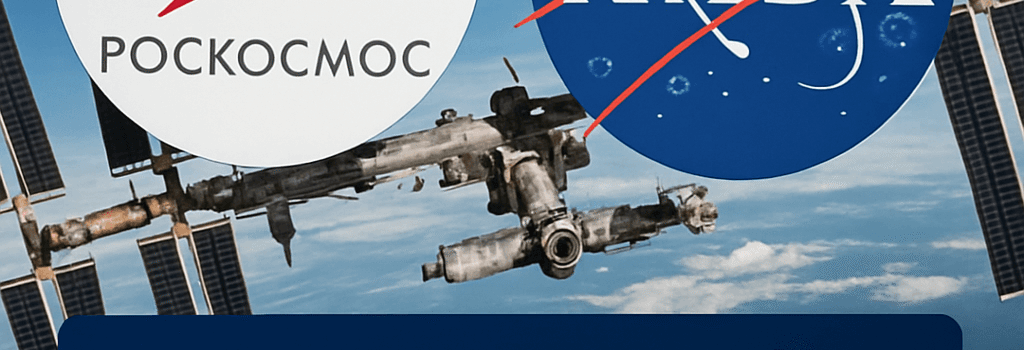Roscosmos’ Push to Revive NASA-ISS Cooperation

Breaking an Eight-Year Hiatus at the Senior Level
Although NASA flight controllers in Houston and Roscosmos mission controllers in Korolyov coordinate the International Space Station (ISS) on a daily basis, the leaders of the two agencies have not met in person since October 2018. In the nearly eight years since, the geopolitical landscape has shifted dramatically: Russia’s invasion of Ukraine, the reassignment of former Roscosmos chief Dmitry Rogozin, multiple NASA administrator changes, and evolving commercial partnerships. This week, Roscosmos Director General Dmitry Bakanov traveled to the United States to attend the Crew-11 launch at Kennedy Space Center and meet with Acting NASA Administrator Sean Duffy, breaking the long-standing high-level engagement drought.
Visit Highlights: From Launch Pad to Houston
Kennedy Space Center: Crew-11 and Beyond
On Thursday morning local time, Bakanov joined NASA dignitaries to observe the Falcon 9 liftoff carrying Boeing’s CST-100 Starliner Crew-11, which included Russian cosmonaut Oleg Platonov. Though NASA’s official channels offered limited coverage, Russia’s state news agency TASS published several updates:
- Bakanov and Duffy reaffirmed joint ISS operations through 2028.
- They agreed to refine a coordinated deorbit plan targeting a controlled reentry by 2030.
- Discussions touched on post-ISS partnerships, exploring new frameworks for collaboration beyond 2030.
“We will work on the deorbiting process until 2030, ensuring public safety and asset preservation,” Bakanov was quoted as saying by TASS.
Johnson Space Center: Aligning Human Spaceflight Objectives
In Houston, Bakanov met with NASA’s Human Spaceflight Division leaders to review crew rotation schedules and ISS life-support upgrades. Conversations reportedly covered:
- Integration of Russia’s Kurs-NA automated rendezvous system with international docking adapters.
- Shared data streams from the station’s ECOSTRESS and OCEAN Earth-observation payloads.
- Contingency protocols for crew rescue leveraging Soyuz and Crew Dragon return vehicles.
Future of the ISS Partnership
With station hardware massing roughly 420 metric tons across 16 pressurized modules, precise deorbit maneuvers require on the order of 300 m/s of delta-V. NASA’s selection last year of SpaceX under a ~$995 million fixed-price contract for an orbital-tug solution using Starship upper-stage thrusters reflected an analysis of performance margins:
- Starship’s combined Raptor vacuum engines deliver >2 MN thrust and an Isp of ~380 s, providing robust reentry targeting.
- Previous studies deemed three Progress M-27M-class vehicles—each with ~800 kg propellant capacity—insufficient for a fully controlled deorbit with public-risk margins.
Bakanov’s delegation has lobbied for reconsideration of Progress or upgraded Soyuz-based options, citing industrial benefits for Russian aerospace firms under Western sanctions. Whether NASA will reopen its procurement analysis remains unclear; NASA Press Secretary Bethany Stevens told Ars Technica, “Not to my knowledge.”
Technical Comparison: Progress vs. Starship Deorbit Strategies
Experts note that a Russian-led deorbit could leverage the Automated Transfer Vehicle–derived propulsion module concept, offering redundant thruster arrays and dual-string avionics. By contrast, SpaceX’s approach consolidates deorbit burns into two precise burns:
- First burn lowers perigee into the upper atmosphere.
- Second burn at apogee targets a splashdown zone in the South Pacific.
“Starship’s high-thrust, high-isp engines simplify the deorbit architecture, but diversified solutions could bolster resilience,” says Dr. Mark Saunders, aerospace systems analyst at MIT.
Geopolitical Analysis: Russia’s Space Diplomacy
Amid ongoing conflict in Ukraine and stringent export controls, Roscosmos appears keen to demonstrate its indispensability. Bakanov’s charm offensive serves multiple objectives:
- Rehabilitate Roscosmos’ international standing after the Rogozin era.
- Secure future funding streams by remaining a key ISS partner.
- Position Russian docking systems and life-support module manufacturing for NextSTEP-3 commercialization efforts.
Moscow’s narrative emphasizes continuity: preserving the ISS as a symbol of global cooperation, even as terrestrial relations fray.
Market Implications: Diversifying Crew Transport
NASA’s current reliance on SpaceX’s Crew Dragon—having deferred Starliner crewed flights until at least 2027—raises concerns over single-source dependence. Restoring Soyuz or developing a hybrid transport agreement could:
- Mitigate risks from potential SpaceX-grounding scenarios.
- Drive competitive pricing through multiple providers.
- Ensure continuous access amid evolving commercial station architectures in the 2030s.
“A multi-vehicle strategy enhances mission assurance and speeds innovation across vendors,” observes Elena Vankina, space policy fellow at CSIS.
Outlook: Beyond 2030 Cooperation
While specifics remain undefined, both agencies reportedly exchanged white papers on lunar Gateway logistics and deep-space habitation modules. Should bilateral collaboration endure, future programs could blend NASA’s Artemis propulsion expertise with Roscosmos’ proven life-support systems:
- Tenant Habitat Modules leveraging ISS-derived environmental control.
- Cislunar refueling depots using European Service Module–style fuel tanks.
In an era of fractured geopolitics, the station may remain the last great bridge between two spacefaring giants.